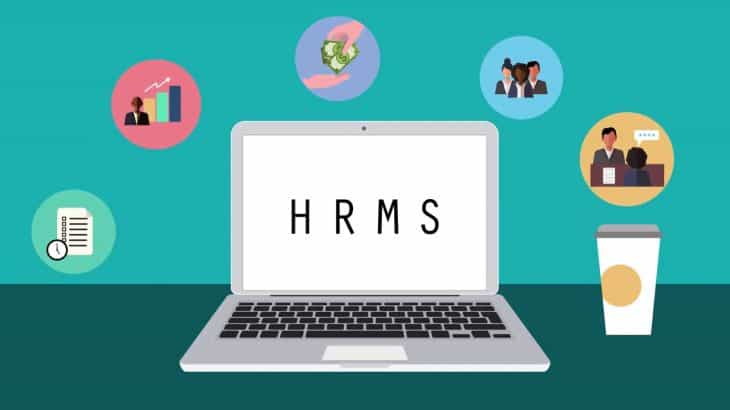In today’s fast-paced business world, the efficient management of human resources is paramount for organizational success. Companies are continually seeking ways to streamline their HR processes, enhance productivity, and ensure that their employees are well taken care of. One powerful tool that has emerged to address these needs is the Human Resource Management System (HRMS). In this article, we will delve into the depths of what an HRMS is, its significance, and how it can transform the way companies manage their workforce.
Defining the Human Resource Management System
A Human Resource Management System, often referred to as HRMS or HRIS (Human Resource Information System), is a comprehensive software solution designed to simplify and automate various HR functions within an organization. These functions encompass the management of employee data, payroll, attendance, recruitment, performance evaluation, and more. An HRMS acts as the digital backbone of an organization’s HR department, enabling a seamless flow of information and processes.
Key Features of HRMS
- Employee Data Management
One of the fundamental aspects of an HRMS is its ability to efficiently handle and organize employee data. This includes personal information, employment history, and performance records. With a well-implemented HRMS, all this information is readily accessible, reducing the burden of paperwork and manual record-keeping. - Payroll Management
HRMS streamlines payroll processing by automating calculations, tax deductions, and direct deposits. This ensures that employees are paid accurately and on time, which in turn boosts their morale and job satisfaction. - Recruitment and Onboarding
Efficient recruitment and onboarding are crucial for any organization. HRMS systems allow HR teams to post job openings, receive applications, and facilitate a smooth onboarding process. This ensures that new employees are quickly integrated into the workforce. - Attendance and Leave Management
Tracking employee attendance and managing leave requests can be time-consuming. HRMS provides a centralized platform where employees can request leave, and managers can approve or deny it. Additionally, it can automatically calculate leave balances, making the process hassle-free. - Performance Evaluation
HRMS helps in conducting performance appraisals and keeping a record of employees’ achievements and areas that need improvement. This data is invaluable for making informed decisions about promotions and raises.
The Significance of HRMS
The adoption of an HRMS can bring about a multitude of benefits for an organization. Let’s explore some of the key advantages that can have a significant impact on business operations.
- Increased Efficiency
By automating various HR processes, an HRMS eliminates the need for manual data entry and paperwork. This results in a significant reduction in administrative overhead, allowing HR teams to focus on more strategic tasks. - Improved Accuracy
The potential for human error is minimized when an HRMS is used for tasks like payroll processing. Employees can trust that their paychecks will be error-free, leading to increased satisfaction and motivation. - Enhanced Compliance
With ever-evolving labor laws and regulations, compliance is a crucial aspect of HR management. HRMS software typically includes compliance features to ensure that all HR activities adhere to legal requirements. - Data-Driven Decision Making
The data collected and stored in an HRMS can be harnessed for data analysis. This data-driven approach helps in making informed decisions about workforce planning, talent development, and employee engagement. - Employee Self-Service
HRMS often comes with employee self-service portals, allowing employees to access their own information, request leave, and update personal details. This empowers employees and reduces the workload on HR staff.
How HRMS Transforms HR Operations
The integration of HRMS into an organization’s infrastructure can lead to a transformation in the way HR operations are managed. Here’s a glimpse of this transformation:
Streamlined Processes
HRMS streamlines the traditionally time-consuming HR processes, such as recruitment, onboarding, and payroll, by automating them. This leads to faster results and less manual intervention.
Better Employee Experience
The self-service options offered by HRMS empower employees, making it easier for them to access information and manage their own HR-related tasks. This results in a more positive employee experience.
Data-Driven Insights
The wealth of data collected by the HRMS can be analyzed to gain insights into the workforce’s performance, needs, and trends. This data-driven approach enables better decision-making.
Cost Savings
By reducing manual administrative work, HRMS helps organizations save both time and money. It also reduces the risk of errors in processes like payroll, which can be costly to rectify.
In Conclusion
In a world where effective management of human resources is a critical component of an organization’s success, the Human Resource Management System (HRMS) stands as a powerful ally. It streamlines HR processes, enhances efficiency, and provides valuable insights that can drive informed decision-making. As businesses continue to evolve, HRMS software will undoubtedly play an increasingly significant role in shaping the future of HR management.





